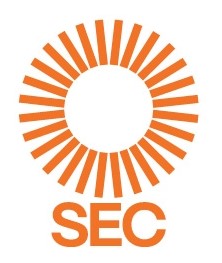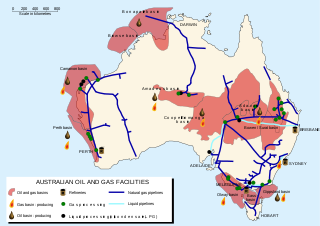In a broad sense, an electricity market is a system that facilitates the exchange of electricity-related goods and services. During more than a century of evolution of the electric power industry, the economics of the electricity markets had undergone enormous changes for reasons ranging from the technological advances on supply and demand sides to politics and ideology. A restructuring of electric power industry at the turn of the 21st century involved replacing the vertically integrated and tightly regulated "traditional" electricity market with multiple competitive markets for electricity generation, transmission, distribution, and retailing. The traditional and competitive market approaches loosely correspond to two visions of industry: the deregulation was transforming electricity from a public service into a tradable good. As of 2020s, the traditional markets are still common in some regions, including large parts of the United States and Canada.
Transpower New Zealand Limited (TPNZ) is the state-owned enterprise responsible for electric power transmission in New Zealand. It performs two major functions in the New Zealand electricity market. As the owner of the National Grid it provides the infrastructure of electric power transmission that allows consumers to have access to generation from a wide range of sources, and enables competition in the wholesale electricity market; as system operator it manages the real-time operation of the grid and the physical operation of the electricity market.

Transend Networks Pty Ltd was a Tasmanian government-owned business which operated between 1998 and 2014 as the electricity transmission network provider for Tasmania, Australia. It was formed by the disaggregation of the Hydro-Electric Commission, and ceased operation when it was merged on 1 July 2014 with the distribution division of Aurora Energy to form the combined network business TasNetworks.

The Independent Electricity System Operator (IESO) is the Crown corporation responsible for operating the electricity market and directing the operation of the bulk electrical system in the province of Ontario, Canada. It is one of seven independent system operators in North America.
The National Electricity Market (NEM) is an arrangement in Australia's electricity sector for the connection of the electricity transmission grids of the eastern and southern Australia states and territories to create a cross-state wholesale electricity market. The Australian Energy Market Commission develops and maintains the Australian National Electricity Rules (NER), which have the force of law in the states and territories participating in NEM. The Rules are enforced by the Australian Energy Regulator. The day-to-day management of NEM is performed by the Australian Energy Market Operator.
EnergyAustralia is an electricity generation, electricity and gas retailing private company in Australia, a wholly owned subsidiary of the Hong Kong-based and listed China Light and Power. EnergyAustralia also had a portfolio of generating sites using thermal coal, natural gas, hydro-electric, solar energy, and wind power.

The State Electricity Commission of Victoria is a government-owned electricity supplier in Victoria, Australia. It was set up in 1918, and by 1972 it was the sole agency in the state for electricity generation, transmission, distribution and supply. Control of the SECV was by a Board of Commissioners appointed by the Victorian Government. After 1993, the SECV was disaggregated into generation, transmission and distribution companies, which were further split and then privatised in the mid to late 1990s. However, electricity supply agreements with the Portland and Point Henry aluminium smelters were retained by SECV, which continued as their electricity supplier.
The Victorian Energy Networks Corporation (VENCorp) was a Victorian State Government-owned entity established in December 1997 responsible for the efficient operation of gas and electricity industries in Victoria, Australia, within Victoria's privatised energy industries. It was funded by energy industry participants.

SA Power Networks is the sole electricity distributor in the state of South Australia, delivering electricity from high voltage transmission network connection points operated by ElectraNet. It is the successor to the Electricity Trust of South Australia.

Wind power is one of the main renewable energy sources in the world. In Australia alone wind power contributed 10% of Australia's total electricity supply in 2020, and made up to 37.5% of its renewable energy supply. Wind resource testing conditions in Australia are optimum, as abundant wind resources are located close to residential areas in the southern parts of the country and on the slopes of the Great Dividing Range in the east.

The energy policy of Australia is subject to the regulatory and fiscal influence of all three levels of government in Australia, although only the State and Federal levels determine policy for primary industries such as coal. Federal policies for energy in Australia continue to support the coal mining and natural gas industries through subsidies for fossil fuel use and production. Australia is the 10th most coal-dependent country in the world. Coal and natural gas, along with oil-based products, are currently the primary sources of Australian energy usage and the coal industry produces over 30% of Australia's total greenhouse gas emissions. In 2018 Australia was the 8th highest emitter of greenhouse gases per capita in the world.
Condamine Power Station is a 140 MW combined cycle power station near Miles on the western Darling Downs in Queensland, Australia. The station is located 8 kilometres (5.0 mi) east of Miles on the south side of the Warrego Highway. The Condamine Power Station is owned by QGC Limited, a subsidiary of Royal Dutch Shell. It has been claimed to be the world’s first combined-cycle power station entirely fired by untreated coal seam gas and Australia's first steam turbine condenser cooled by coal seam methane waste water. However, the Townsville Power Station at Yabulu, which was converted from a peak load power station to burn only coal seam gas in a combined cycle configuration, was commissioned much earlier, in February 2005.
The Australian Energy Market Operator (AEMO) performs an array of gas and electricity market, operational, development and planning functions. It manages the National Electricity Market (NEM), the Wholesale Electricity Market (WA) (WEM) and the Victorian gas transmission network. AEMO also facilitates electricity and gas full retail contestability, overseeing these retail markets in eastern and southern Australia. It is additionally responsible for national transmission planning for electricity and the establishment of a Short Term Trading Market (STTM) for gas.

The Pelican Point Power Station is located at Pelican Point, 20 km from the centre of Adelaide, South Australia on the Lefevre Peninsula. It is operated by Engie, which owns 72 per cent of the power station. Mitsui owns the remaining 28 per cent. It burns natural gas in a combined cycle power station, comprising two 160 MW gas turbines and one 165 MW steam turbine, to generate up to 485 MW of electricity.

Powerlink Queensland is an electricity transmission system operator owned by the Government of Queensland which operates the high-voltage electricity transmission infrastructure in Queensland.

Tasmanian Networks Pty Limited, trading as TasNetworks, is a Tasmanian Government State owned company that is responsible for electricity transmission and distribution throughout Tasmania. It also owns and operates a telecommunications network throughout the state.

The Australian electricity sector has been historically dominated by coal-fired power stations, but renewables are forming a rapidly growing fraction of supply.
Dry Creek Power Station is a power station at Dry Creek in the northern suburbs of Adelaide, South Australia. It is owned and operated by Synergen Power, a joint venture of Engie and Mitsui. The power station has three open cycle gas turbines, each rated at 52MW. It was commissioned in 1973–1974 by the Electricity Trust of South Australia.










